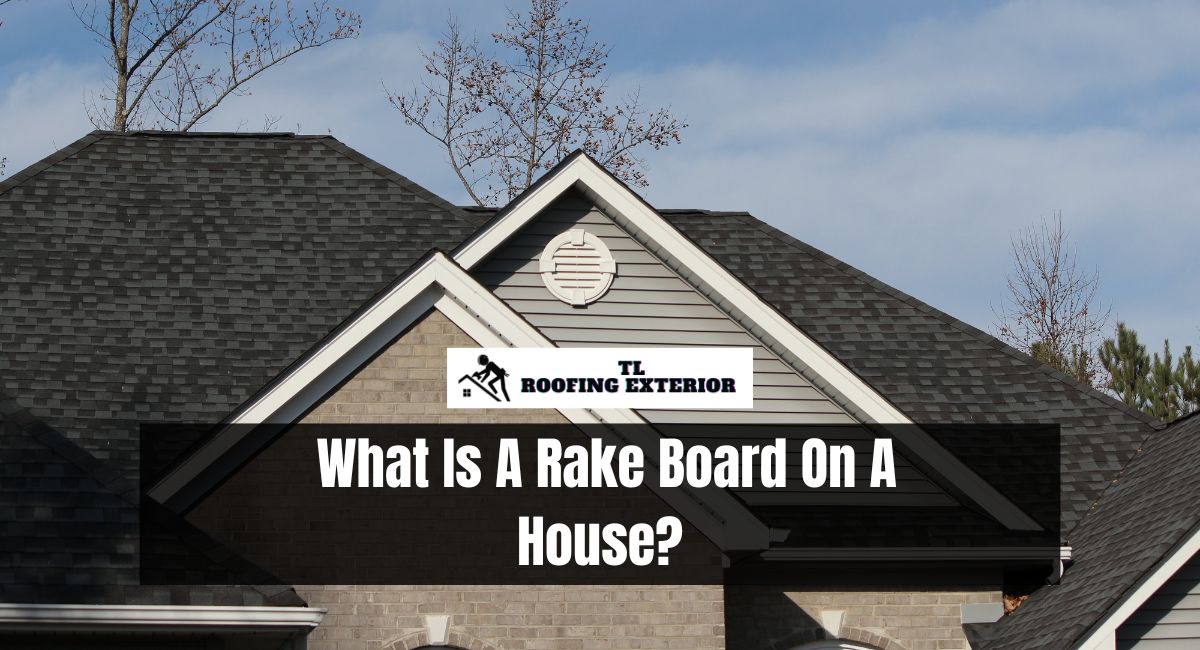In home construction and design, even the slightest details can have a significant effect. The rake board is a frequently overlooked detail that plays a crucial role in aesthetics and functionality. The rake board, which is positioned along the sloping margins of a gable roof, conceals and protects the roof’s underlying structure.
However, what is a rake board, and why is it essential for your home? This article will explore rake boards’ function, varieties, and advantages, illuminating their role in residential construction.
What Is A Rake Board On A House?
A rake board is a component of a home’s roofing system that travels along the sloped edges of a gable roof, following the roof’s pitch. It is both functional and aesthetically pleasing.
Typically made of wood, PVC, or other composite materials, the rake board is affixed to cover and protect the roof sheathing and rafters’ exposed ends. It gives the roof’s edge a finished appearance and functions as an attachment point for the soffit and fascia.
Functions of a Rake Board
- Aesthetic Appeal: The rake board gives the gable end of a home a clean, finished appearance, thereby enhancing its overall appearance.
- Protection: Covering their exposed extremities protects the roof sheathing and rafters from weather elements such as rain, snow, and wind.
- Structural Integrity: The rake board lends additional structural support to the roof’s edge, contributing to its shape and stability.
- Attachment Point: It functions as an attachment point for other components, such as soffits, fascia, and gutters, securing them in place.
Types of Rake Boards
- Plain Rake Board: A simple, flat board that extends along the perimeter of the roof. It is the most fundamental form and is typically employed in simpler, more conventional architectural styles.
- Decorative Rake Board: These boards can be embellished with intricate designs, moldings, or trim to add architectural interest to a residence.
- Composite/PVC Rake Board: Made from composite materials or PVC, these rake boards are more resistant to rot and insects than timber rake boards, but they can be more costly.
Installation and Maintenance
- Installation: Typically, rake boards are installed before the roofing material but after the roof sheathing has been installed. Typically, they are fastened or screwed to the rafters.
- Painting and Sealing: They should be painted or sealed to protect wooden rake planks from the elements. Some householders choose to paint them a color that complements or contrasts the exterior of their homes.
- Regular Inspection: As with all exterior components, rake boards should be routinely inspected for symptoms of wear, rot, or damage and repaired or replaced as needed.
- Material Compatibility: Ensure that the rake board’s material is compatible with the remainder of your roofing and siding materials, particularly if you are considering composite or PVC options.
What Does A Rake Board Do?
A rake board on a gable roof serves aesthetic and practical purposes. Installed along the sloping margins of the roof, it conceals and protects the exposed ends of the roof sheathing and rafters for a finished appearance.
Additionally, the raking board serves as a barrier against the elements, preventing water infiltration and wind damage. In addition, it functions as a base for attaching other exterior elements, such as drip edges and gutters, thereby contributing to the roofing system’s overall durability.
Are Rake Boards Necessary?
Despite not being strictly required for the structural integrity of a building, rake boards serve vital purposes. They give the sloping edges of a gable roof a finished appearance, enhancing the aesthetic appeal of the residence.
Functionally, rake boards shield the exposed ends of the roof sheathing and timbers from the elements, thereby reducing the likelihood of water infiltration and rot.
In addition, they serve as a base for attaching elements such as drip margins and gutters. The roof’s aspect and durability could be compromised if they are omitted.
What Is The Difference Between Rake Board And Fascia?
Rake board and fascia serve distinct functions and are located in different roof components. On the edges of the roof where the gutters are affixed, fascia boards are mounted horizontally along the roofline.
They close off the space between rafters and serve as a gutter mounting point. Alternatively, rake boards are installed along the gable roof’s sloping, or “rake,” margins. They give the roof a finished appearance and safeguard its edge. Both are essential for the roof’s appearance and protection.
Conclusion
The rake board serves as a protective barrier that shields the roof’s edges from weather damage and provides a clean, finished appearance to the exterior of your home.
Choosing the correct material and design for your rake board can affect its durability and how well it complements your home’s design. Whether you choose a simple, straight-edged board or a more intricate design, the key is to install and maintain it properly to maximize its functional and aesthetic benefits.
Read More: What Type Of Underlayment For Metal Roof?
